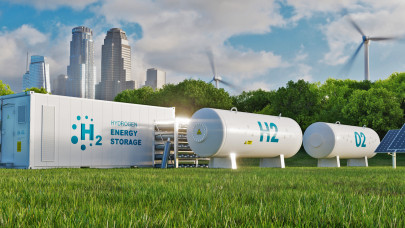Key investments in the transition—such as solar and wind farms, storage infrastructure, green hydrogen technologies, electrification, and carbon capture and storage—are perceived as riskier than fossil fuel-based projects. This higher risk perception translates into increased capital costs, which negatively impacts the financial viability and attractiveness of green projects.
The study categorizes risks affecting capital costs into four main groups:
Macro Risks: Uncertainty driven by political instability, regulatory deficiencies, and procedural challenges can account for 40–90% of the capital costs of renewable energy projects.
Market Risks: Factors such as market demand, revenue generation, and cost competitiveness weigh up to 20% of capital costs in developing countries.
Technical Risks: These include project delays, budget overruns, and underperformance.
Financial Risks: Limited access to capital also influences cost assessments.
Additionally, undervaluing the climate, environmental, and public health benefits of green projects amplifies perceived risks, further driving up capital costs.
“Facilitating investments in green projects is critical for accelerating the energy transition and decarbonizing economies,” stated Ovidiu Popescu, Partner at Deloitte Romania and Leader of the Energy and Sustainability Practices. “In advanced markets, risks are declining, reducing capital costs and encouraging investments. Solar and wind projects, for example, have achieved cost reductions of 80% and 40% respectively over the past 15 years. This progress reflects cumulative experience and lessons learned, which foster predictability and mitigate risks. The study highlights strategic measures to de-risk emerging technologies, ensuring their commercial viability in the medium and long term, tailored to both market conditions and technological maturity.”
Proposed de-risking measures include:
Information Instruments: Strategies and taxonomies that enhance market predictability and stability.
Regulatory Instruments: Streamlining licensing processes and improving network planning.
Economic and Market Instruments: Tax incentives, support policies, and offtake contracts to attract developers and investors.
Financial Instruments: Grants, subsidies, guarantees, insurance, and concessional loans.
The study emphasizes that while systemic measures can mitigate many risks, some residual risks require risk transfer instruments, such as blended finance. Public-private collaboration in blended finance could lower renewable energy costs by up to 35%.
“The green finance ecosystem comprises diverse stakeholders—developers, investors, and financiers—each with unique goals and constraints,” explained Radu Dumitrescu, Financial Advisory Partner-in-Charge, Deloitte Romania. “Public funding, operating under more flexible risk criteria, has been the cornerstone of green finance, contributing nearly half of global renewable energy investments in 2021 and 2022. The study calls for improved accountability among stakeholders and collective financial learning, which could further diversify financing instruments. For instance, in Germany, such measures reduced the cost of capital for solar and wind installations by over 4% between 2005 and 2017.”
The report outlines roles for implementing and coordinating these measures:
Investors and Lenders: Incorporate decarbonization objectives into strategies and develop climate risk assessment criteria.
Regulatory Authorities: Establish guidelines for a predictable investment environment and integrate financial learnings into public policy.
Development Banks: Facilitate blended finance solutions and large-scale refinancing mechanisms.
International Organizations: Drive a “new energy world order,” ensuring free and efficient movement of information, strategies, and technologies essential for the transition.
Achieving global energy goals by 2050 will require scaling annual green investment flows from billions to €6.6 trillion, as identified in the study.










